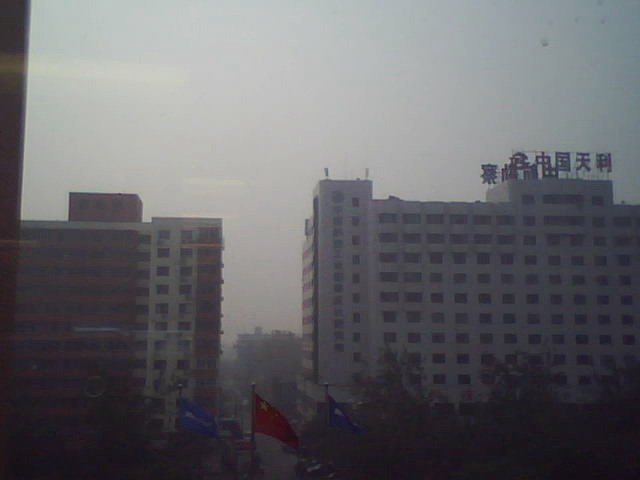I've written twice before, comparing Western and Chinese news coverage of the same story (Obama visit to China and Internet registration). In both cases, it was interesting to see how the reports read very differently despite presenting the same basic facts; differences in tone, emphasis, and inclusion/omission of other facts can really change how the story comes across.

Today, I was reading about how Beijing will start reporting a new air pollution measure - PM 2.5 (2.5 micron particulate matter). I've written before several times about the gross Beijing air. We relied on the US Embassy's air quality Twitter feed that showed what we thought was a more accurate view of what we were seeing outside; Chinese official reports measured the larger PM10 particles and would say we were having only minor air pollution even when we couldn't see outside.
The report from China Daily acknowledges the dangers of PM2.5 and how the government is responding to "public criticism". They describe the effort as similar to what other cities in China have been doing and that the government is already taking action to clean up Beijing air. There is no mention of the US Embassy's Twitter feed. There is also a story (higher on the front page) describing how Beijing's PM 2.5 count is down. The story paints a picture of the government taking action and listening to the people. "Beijing to release PM 2.5 data".
The similar story from the New York Times described the actions as a response to "public outcry", "public's anger", and bloggers who "sharply criticized" the government. NYT puts a lot more emphasis on the effect of the US Embassy Twitter feed as well as mentioning how Twitter is blocked in China, and talks about the Chinese complained about the feed as "confusing" and "insulting". This story leaves the reader thinking the people are mad at the government and that the gov't needs outside pressure to change. "China to Release More Data on Air Pollution in Beijing".
Again, both of these stories seem factually correct, and perhaps the "right" interpretation is somewhere in the middle. You'll never know unless you read multiple news sources.
Wei Reply
If you play with Weibo, you can know NYT is absolutely right.